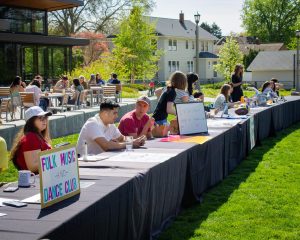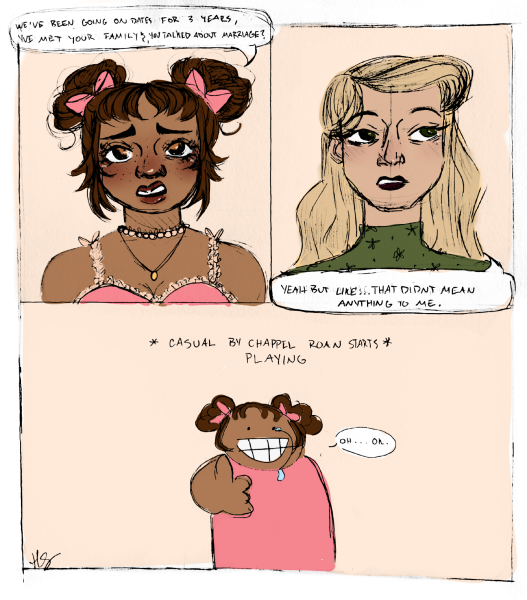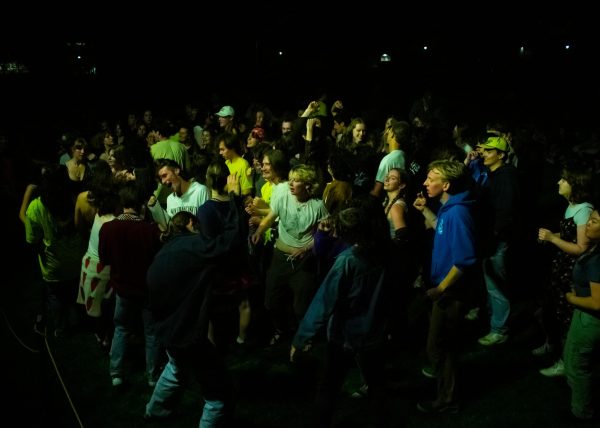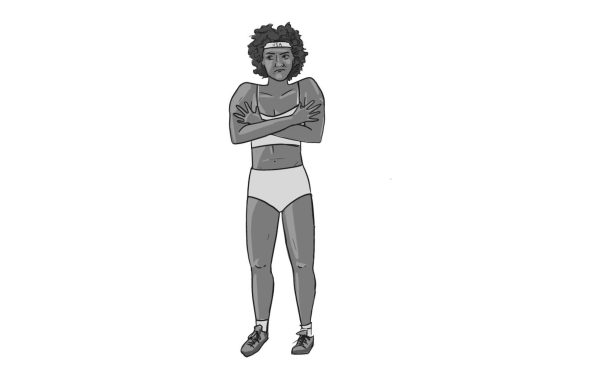Commemorating a full year of the Archives virtual “Coronavirus Stories” exhibit
March 25, 2021
It’s officially been a year since COVID-19 forced Whitman to close its doors. Last March, soon after students found themselves indefinitely housebound, the Whitman College and Northwest Archives opened “Coronavirus Stories,” an online exhibition through its virtual ARMINDA platform. Students, staff and faculty were encouraged to submit pieces documenting their experiences in quarantine.
In the year since its inception, the exhibit has seen an outpouring of creativity from the Whittie community. Personal essays, experimental films and vibrant paintings currently fill its virtual walls.
When her Intro to Filmmaking class was cut short, Audrey Mace, a junior film and art double major, found herself unable to collaborate with classmates on her final project.
“I didn’t have actors, really, I didn’t want to make something fictional, and the only thing going on in my life was the pandemic, so I just decided to film everything that was going on in my house,” Mace said.
That footage gradually evolved into a creative nonfiction piece called “New Normal: An experimental video about life during quarantine.” It combines short clips of day-to-day activities, audio from news reports, interviews with Mace’s friends and family and a self-performed piano arrangement of The Pixies’ “Where Is My Mind.”
“I had totally forgotten about it, and then I was going through all my old films that I’d made, and I saw it, and I watched it again. It was kind of sad, but also very hopeful, and weird to look back on what we were thinking right at the start,” Mace said. “Everybody knew something bad was happening and didn’t know how long it was going to be, but there was so much hope.”
Over the summer, Mace worked for the Archives and was encouraged to submit to the ARMINDA exhibit by a colleague, Dana Bronson.
For senior rhetoric major Lauren Rhodes, painting was the best way to express the sense of loss and isolation she felt back in April. She submitted a pair of paintings to the exhibit that she felt represented the pain of turning her back on normalcy.
Each piece bears a line-art silhouette of a body from behind, framed by colorful, vibrant abstractions. The colors, according to Rhodes, are meant to represent not only the lost pleasures of pre-pandemic life but her own extroverted personality.
“I still feel very much just kind of trapped within myself, trapped within my house, just quarantining all the time,” Rhodes said. “And it’s my last year. I’m a senior. There are so many traditions that I’m supposed to be doing within my own sorority, within the clubs that I’m in, the affinity groups that I’m in.”
“Coronavirus Stories” also boasts work from junior history major West Skrobiak-Bales, whose work with the Archives encouraged him to submit a personal essay entitled “Reflection on first 27 days in isolation” in mid-April.
“I think as a history major/historian in training . . . it’s really important to get the emotional side of what people go through during major events like this,” Bales said.
Now that a year has passed since he first wrote it, Bales says revisiting the piece makes him feel torn in two directions.
“It’s like, I understand where those emotions came from, and I’m glad I wrote them down and captured that moment because I do think it’s important,” Bales said. “And then at the same time, you see yourself in the past, and you’re like, ‘You’re going to learn to deal with it.’ And then you kind of wonder, like, do you have to learn to deal with it? How did you learn to cope, or not?”
For Bales, it feels like we’ve all reached a point where we’ve come to accept the realities forced upon us by the pandemic.
“We keep saying it’s like we’re experiencing a global trauma, in this way that all this has happened, but now it’s become mundane. So to have a record of that, when we really were feeling it . . . is definitely something special.”
“Coronavirus Stories” is still accepting submissions, and can be accessed here. If you wish to contribute a piece, you can do so using this Google Form.








